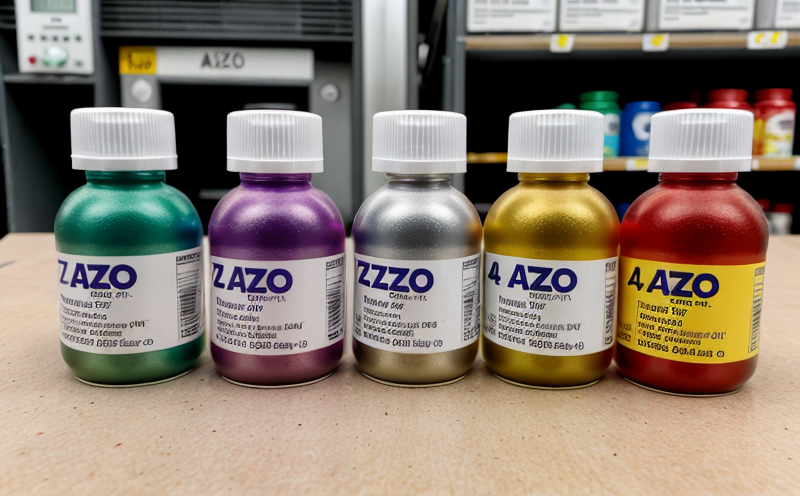AATCC 189 Analysis of restricted substances in dyed fabrics
The AATCC Test Method 189 (AATCC 189) is a standard developed by the American Association of Textile Chemists and Colorists to identify restricted substances present in dyed or printed textile products. This method specifically targets azo dyes and heavy metals that are known for their potential toxicity, carcinogenicity, or adverse environmental impact.
The analysis involves multiple steps designed to ensure accurate detection of these harmful compounds. Specimen preparation is critical; the fabric swatches must be thoroughly cleaned according to specified procedures outlined in AATCC 189. Once prepared, they undergo extraction using a solution that effectively releases any azo dyes or heavy metals adhered to the fabric.
The extracted solution is then analyzed via high-performance liquid chromatography (HPLC) for the presence of specific azo compounds and inductively coupled plasma optical emission spectrometry (ICP-OES) for heavy metal content. This ensures precise quantification, which is essential for compliance with international regulations such as REACH.
Understanding the importance of this test helps quality managers and R&D engineers ensure their products meet stringent environmental and health standards. Compliance officers can rely on accurate AATCC 189 analysis to avoid costly recalls or legal issues stemming from non-compliance.
The scope of AATCC 189 extends beyond just compliance; it also supports innovation in the textile industry by allowing manufacturers to explore safer alternatives and improve product performance without compromising safety. This method has been widely adopted internationally, making it a key tool for ensuring consistency across global markets.
With advancements in analytical techniques, AATCC 189 continues to evolve. Recent updates have expanded the list of target compounds, reflecting new knowledge about hazardous substances and their effects on human health and the environment. This evolution underscores the importance of staying current with these standards for maintaining competitive edge and consumer trust.
In summary, AATCC 189 is not just a compliance requirement but also a vital part of ensuring product safety and quality in the textile industry. By adhering to this standard, companies demonstrate their commitment to responsible manufacturing practices and contribute positively to sustainability efforts globally.
Why It Matters
The importance of AATCC 189 cannot be overstated in the context of textile manufacturing. Compliance with this standard ensures that textiles meet stringent safety requirements regarding restricted substances like azo dyes and heavy metals.
- Consumer Safety: Ensures that consumers are not exposed to potentially harmful chemicals found in dyed fabrics.
- Environmental Protection: Minimizes the release of hazardous substances into ecosystems through wastewater discharge during production processes.
- Market Access: Facilitates easier entry into international markets by meeting regulatory requirements set by countries like the European Union (EU) and United States.
In addition to these benefits, adherence to AATCC 189 can enhance brand reputation and customer confidence, leading to increased market share. It also supports sustainable practices that align with growing consumer preferences for eco-friendly products.
For manufacturers, compliance demonstrates a commitment to responsible production methods, which can foster long-term relationships with suppliers and customers alike. Furthermore, it helps avoid potential legal challenges associated with non-compliance or product recalls due to safety concerns.
Scope and Methodology
The scope of AATCC 189 encompasses the analysis of restricted substances in dyed fabrics, focusing primarily on azo dyes and heavy metals. This method is applicable to both woven and knitted fabrics, making it versatile for various textile applications.
Methodology involves several key steps:
- Preparation of the specimen by cleaning according to AATCC 189 guidelines.
- Extraction of the fabric swatches using a suitable solvent that effectively releases azo dyes and heavy metals.
- Analysis of the extracted solution through HPLC for azo compounds and ICP-OES for heavy metal content.
The acceptance criteria specify limits on permissible levels of restricted substances, ensuring that fabrics meet international standards like REACH. Compliance with these criteria is crucial for avoiding potential health risks and regulatory penalties.





